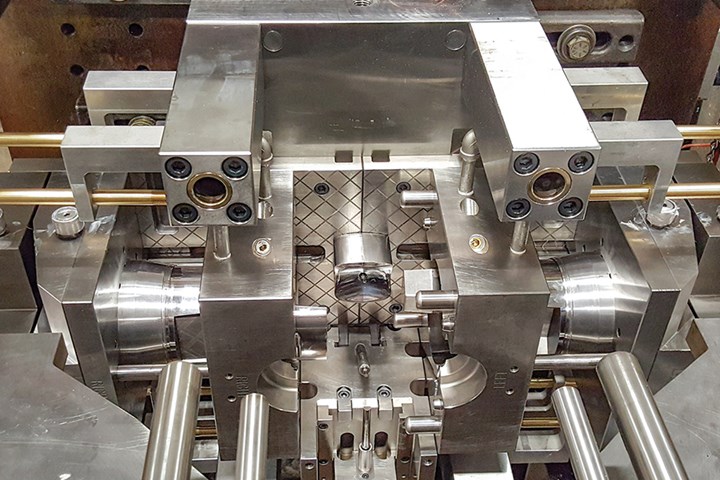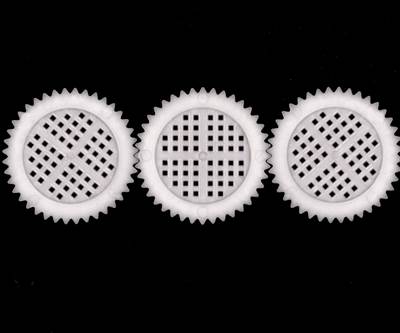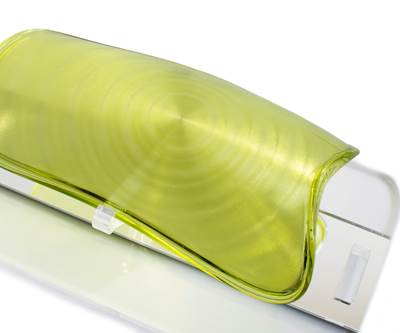As a consultant, I continually see mold and molding issues that could easily have been avoided. The most common problem has little to do with cutting steel. The problem is failing to consider, obtain and verify all the pertinent information up front—prior to the mold’s construction.
It’s the responsibility of the moldmaker to ensure the mold will produce dimensionally, functionally, and aesthetically acceptable parts for the life of the program. There is no way to achieve that goal without first determining what the dimensions, function, aesthetics, and lifespan requirements are from the customer.
Most clients are not well versed in our industry, but all too often think they are experts. Still, they prefer to work with knowledgeable vendors—someone who is looking out for their best interest. It is the moldmaker’s responsibility to educate the customer, which also serves to protect the moldmaker. For example, no matter how insistent a customer may be, the moldmaker should never agree to build a seven-cavity hot-runner family mold for parts of various sizes and wall thicknesses in a high-shrink semi-crystalline material.
Don’t laugh. This is a real example, and the project is 11 months late and will soon be converted into four molds. The expensive hot-runner system is now a boat anchor. If that wasn’t bad enough, the moldmaker agreed to amortize the mold into the piece price, with no down payment. Ultimately, if the molder can’t produce acceptable parts, the finger is going to get pointed at the moldmaker.

With all this in mind, I compiled a list of questions that should be asked both internally and to the customer to help avoid any delays or oversights that could affect getting paid for the current mold, as well as any future tooling orders. I am not going to expand on why each question should be asked. If you are an experienced moldmaker, you already know why. None of the questions below are about the details of the mold design, such as the type of interlocks, plate thicknesses, eyebolt holes, etc. The list is focused on communicating all the pertinent information from and to the customer.
If the molder can’t produce acceptable parts, the finger is going to get pointed at the moldmaker.
Initial Inquiry Questions
1. How did you hear about us?
2. What is the end use of the product (medical, automotive, consumer, etc.)?
3. Are there any mating parts?
4. Do you need any part-design assistance?
5. What are the expected annual production quantities?
6. What is the expected lifespan of the product?
7. Do you have a CAD file of the part? If so, what is the file format?
8. Do you have or need a 3D-printed or machined prototype?
9. Do you have a 2D dimensioned drawing of the part?
10. What is the material type?
11. Will the parts be made in more than one type of material or more than one color?
12. Do you have any mold-design specifications that need to be adhered to?
13. Can we get your molder involved in future discussions?
14. Is the number of cavities desired based on the mold cost, part cost, or production requirements?
15. If the mold is to be a MUD or other quick-change insert type, is a specific frame size required? If yes, what is the frame size or number?
16. Do you know if you want a cold runner, hot bushing, hot runner, valve gate, etc.?
17. Are there any interchangeability requirements, such as various versions of the part or engravings?
18. Are there any inserts that will be overmolded?
19. Are there any secondary operations that might affect the mold design?
20. What are the surface finish requirements for the cavity?
21. What are the surface finish requirements for the core?
22. How many samples will you need initially?
23. Are any inspection or testing criteria required for the parts?
24, Are there any mold qualification requirements?
25. Is there anything else we should know?
26. How many other moldmakers are quoting this project?
27. Are any of these moldmakers offshore?
28. When are you expecting to place the order for the mold?
29. How critical is the delivery date?
30. If you gave the potential client a ballpark mold cost, what was their reaction?

Internal Review of the Supplied 3D Model
31. Did the model translate well?
32. Should the part design be modified to reduce the mold cost or increase its longevity?
33. Can the model be modified in-house?
34. Are any actions required (cams, lifters, two-stage ejection, unscrewing, etc.)?
35. Are there any holes or features requiring shutoffs?
36. Does the part have uniform wall thickness?
37. Is additional coring needed?
38. Is there sufficient draft to prevent sticking or scuffing in the cavity?
39. Is there sufficient draft to prevent sticking or scuffing on the core?
40. Are there any undercuts?
41. Are there radii on both internal and external corners?
42. Should any radii be removed to eliminate cavity impression in both halves of the mold?
43. Are there any ejection concerns?
44. Are there any gating concerns?
45. Are there any filling concerns?
46. Should a flow analysis be considered?
47. Are there any cooling concerns?
48. Should high-conductivity materials, or conformal cooling be considered?
Internal Review of the Supplied 2D Drawing
49. Does the 2D drawing have everything defined? Everything includes
a. Dimensions,
b. Tolerances,
c. GD&T requirements (straightness, flatness, concentricity, etc.),
d. Surface finish or texture,
e. Notes.
50. What is the date and revision level of the drawing?
51. Are the critical dimensions identified and toleranced?
52. Are there any dimensions or tolerances that are not obtainable for tooling or molding?
53. Has the material type and grade been specified?
54. Does the material contain any abrasive fillers, such as glass?
55. Does the material contain any flame retardants or other additives?
56. Do any of the notes refer to documents that were not provided?
57. Should a prototype tool be considered?
The more steps we take up front to minimize risks, through the collaboration of the concerned parties, the more competitive and profitable we will be.
Part Design Review with Customer—Prior to Mold Design
(In addition to any concerns or questions from above.)
58. What is the controlling document—a 3D model or a 2D drawing?
59. Are you familiar with the inherent issues of family molds?
60. Are runner shutoffs required?
61. Is the intended gate location acceptable?
62. Can a gate recess be added?
63. Can ejector-pin bosses be added on deep ribs?
64. Are samples and 2D drawings of the mating parts available?
65. Are alternate material types or grades acceptable?
66. Are you familiar with anisotropic shrinkage?
67. Who is specifying the shrinkage factor?
68. Who is supplying the material and colorant?
69. Are the intended molding machine’s specifications available?
70. Is the molder planning on using a robot or picker?
71. Is it acceptable if the engraving is raised on the part?
72. Is a recycle symbol, date clock, revision symbol, or cycle counter desirable?
73. Do you have artwork for any engraving?
74. Are the font type and size specified?
Mold-Design Review with Customer
(In addition to any concerns or questions from above.)
75. Is the cavity number location, size, and depth acceptable?
76. Are the ejector pin locations acceptable?
77. Are the witness lines from any actions acceptable?
78. Should some areas be left steel safe and adjusted after sampling?
79. Should any spare parts be made?
 Photos by Jim Fattori. Molds built by Lawrence Mold & Tool Corp., Trenton, N.J.
Photos by Jim Fattori. Molds built by Lawrence Mold & Tool Corp., Trenton, N.J.Molding Considerations
If you think molding issues have no effect on the part or mold design, think again. For example, sink and knit lines will affect the gate location. Splay and jetting will affect the gate type, size and location. Flash will affect shutoff considerations, steel types and heat treatment. Sink, warpage, and material type will affect both the part and mold design. Burn marks and shorts will affect the vent types and locations. Color values will affect the part’s wall thickness and mold’s surface finish.
80. What are the limitations on each of the following?
• Color (L, a, b, Delta E, gloss),
• Gate vestige,
• Sink,
• Warp,
• Knit or flow lines,
• Flash,
• Shorts,
• Splay,
• Burn marks,
• Black specks,
• Grease or dirt,
• Other.
Our business is full of risks. The more steps we take up front to minimize these risks through the collaboration of the concerned parties, the more competitive and profitable we will be.
ABOUT THE AUTHOR: Jim Fattori is a third-generation molder with more than 40 years of experience in engineering and project management for custom and captive molders. He is the founder of Injection Mold Consulting LLC in Pennsylvania. Contact: jim@injectionmoldconsulting.com
Related Content
Process Monitoring or Production Monitoring — Why Not Both?
Molders looking to both monitor an injection molding process effectively and manage production can definitely do both with tools available today, but the question is how best to tackle these twin challenges.
Read MoreA Systematic Approach to Process Development
The path to a no-baby-sitting injection molding process is paved with data and can be found by following certain steps.
Read MoreThree Key Decisions for an Optimal Ejection System
When determining the best ejection option for a tool, molders must consider the ejector’s surface area, location and style.
Read MoreInjection Molding: Focus on these Seven Areas to Set a Preventive Maintenance Schedule
Performing fundamental maintenance inspections frequently assures press longevity and process stability. Here’s a checklist to help you stay on top of seven key systems.
Read MoreRead Next
Mold Designers Put the Web to Work
The internet is redefining the tool-design process. Some mold designers are finding that using the Web to manage a tool project can shorten lead times, cut costs, and make sure vital data get to all participants in a project.
Read MoreMicro-Mold Demonstration Highlights Collaboration
Mold Craft Inc. demonstrates micro-injection molding NPE2018 with a Wittmann Battenfeld press and a Sodick vertical molding machine.
Read MoreCollaborative Mold Design Experiment Based on Clariant's Color Trends
Mold texture specialist and Clariant investigate interaction of social trends, color and textures.
Read More





















